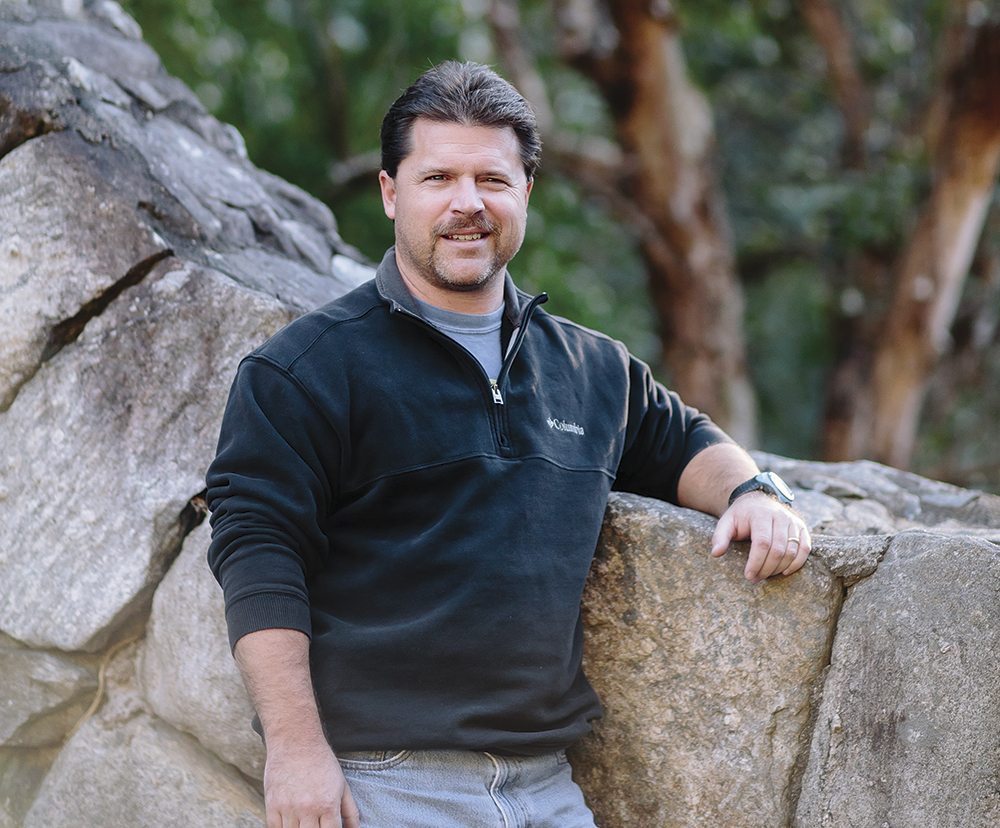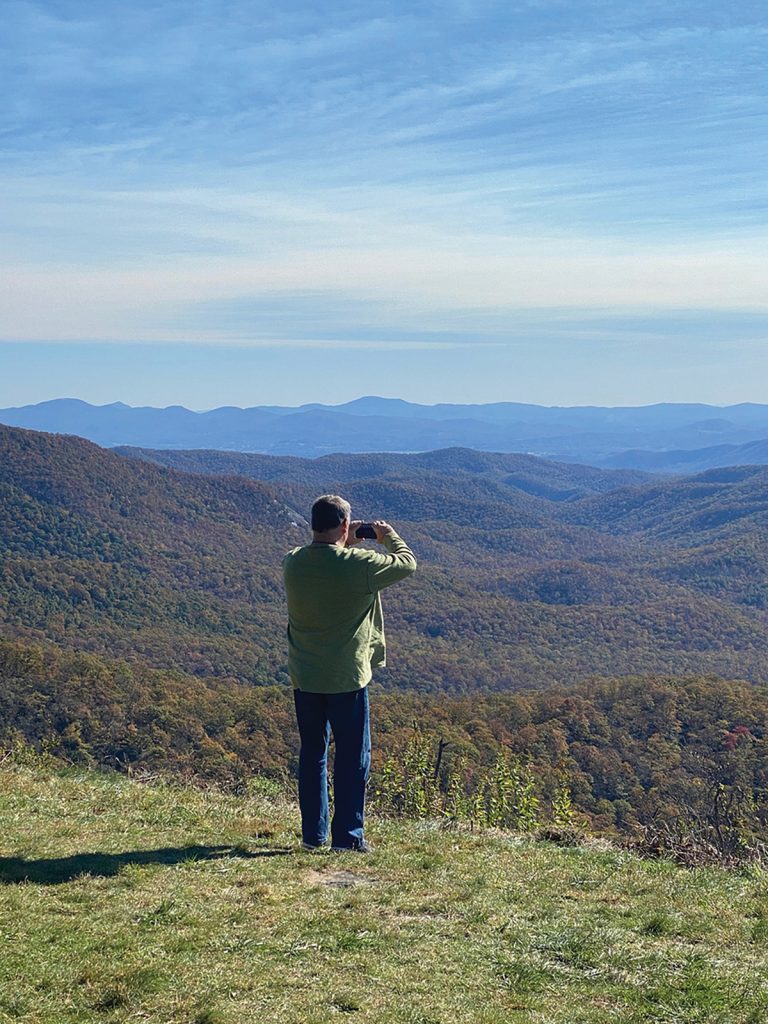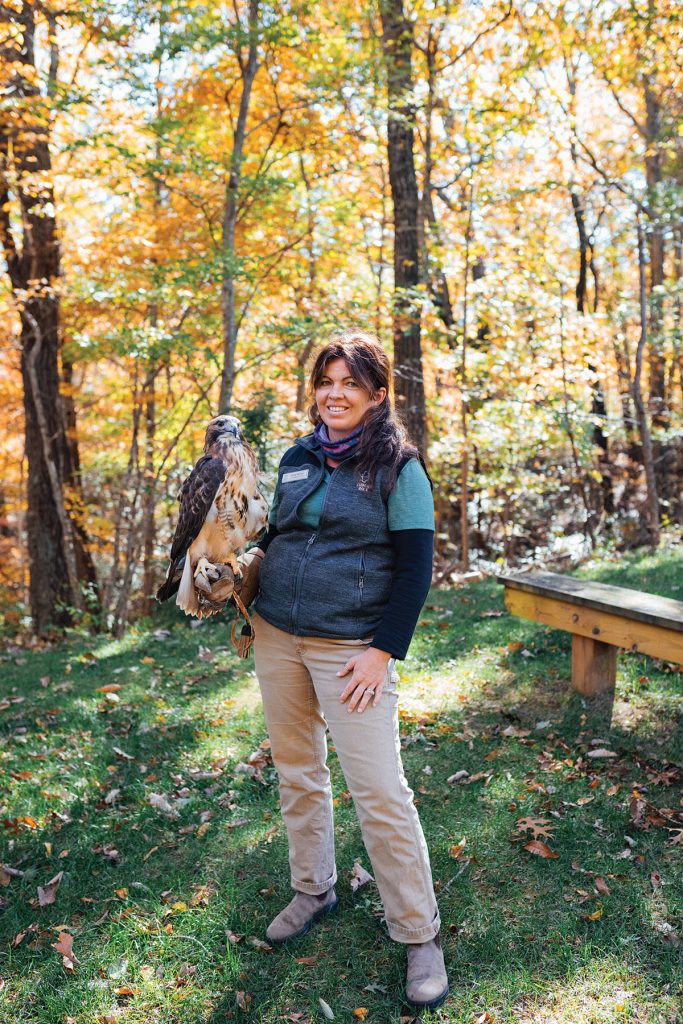
Naturalist Clint Calhoun will tell you what’s safe. Photo by Tim Robison.
The sun is setting and darkness creeps into the forests of Western North Carolina. As the light fades, a hiker realizes that the trailhead is miles away. A quick jaunt to seek out a stream or follow an animal track has gone awry, and the realities of being lost in the wilderness set in.
What happens next depends on nature’s fickle hand and on something much more practical — having the skills and knowledge to stay safe in unfamiliar territory.
Surviving rugged terrain in the winter can be harsh, but having keen survival skills can stop an unwise misstep from becoming a life-or-death situation.
Clint Calhoun, park naturalist for Chimney Rock Park, says that having the right supplies and judging one’s own skill level are key to surviving a night alone in an unfamiliar area.
“I always tell people that if you’re hiking somewhere and you don’t know where you’re at, stay on the trail,” he advises.
He notes that following an unmarked trail is the most common way that casual hikers get lost. What might seem like a spontaneous adventure can quickly turn into a dire predicament.
Even experienced hikers can encounter unexpected conditions, making it important to set out with a pack of supplies. Calhoun reveals what he carries on a typical hike: plenty of water, a tarp, a knife or hatchet, multiple fire-making tools such as flint and steel, a first-aid kit, and a flashlight. Trail mix and energy bars are good to have but not essential, he notes.
The body can survive for quite a while without food. “But you can only go about three days without water,” he says. Moreover, having the energy to safely return to the trail or follow a streambed toward civilization is important for someone with way-finding skills, but scavenging for food without advanced knowledge is a dangerous gamble.
“If you’re inexperienced as far as your plant ID, there’s a lot of stuff you can eat in the Southern Appalachians that can really make you sick,” says Calhoun. “And there’s stuff that can kill you.”
If a hiker knows what to look for, following the patterns of woodland animals can offer some guidance. After all, squirrels and bears have been surviving off the trail for centuries.
“A lot of the things that squirrels can eat, we can eat,” he notes. “Hickory nuts have a lot of protein. If you see what the squirrels are gathering, that’s probably something you can eat as well.”
The most important advice he can offer a lost casual hiker is to stay put. Blow a trail whistle and build a fire, but don’t wander deeper into the woods.
“You have to plan for the worst and hope for the best.”
Clint Calhoun will lead a survival skills class (part of the Naturalist Niche series) on Saturday, November 21, at Chimney Rock Park. 10:30am-12:30pm. General adult fee is $22/adult (includes park admission), with discounts for kids and annual passholders. See www.chimneyrockpark.com for more information.



